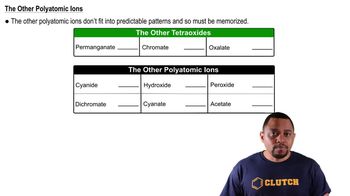Here are the essential concepts you must grasp in order to answer the question correctly.
Oxidizing Agents
An oxidizing agent is a substance that gains electrons in a chemical reaction, causing another substance to be oxidized. The strength of an oxidizing agent is determined by its ability to accept electrons; stronger oxidizers have a greater tendency to undergo reduction. Understanding the oxidation states and the electron configurations of the substances involved is crucial for determining their oxidizing strength.
Recommended video:
Oxidizing and Reducing Agents
Oxidation States
Oxidation states (or oxidation numbers) indicate the degree of oxidation of an atom in a compound. For example, in Cr2+, chromium has an oxidation state of +2, while in Cr3+, it is +3. The higher the oxidation state, the stronger the oxidizing ability, as the species is more likely to gain electrons to revert to a lower oxidation state.
Recommended video:
Chromate Ion (Cr2O72-)
The chromate ion (Cr2O72-) is a well-known oxidizing agent in aqueous solutions. It contains chromium in a +6 oxidation state, which is significantly higher than that in Cr2+ and Cr3+. This high oxidation state allows Cr2O72- to readily accept electrons, making it a stronger oxidizing agent compared to Cr2+ and Cr3+.
Recommended video:
 Verified step by step guidance
Verified step by step guidance

